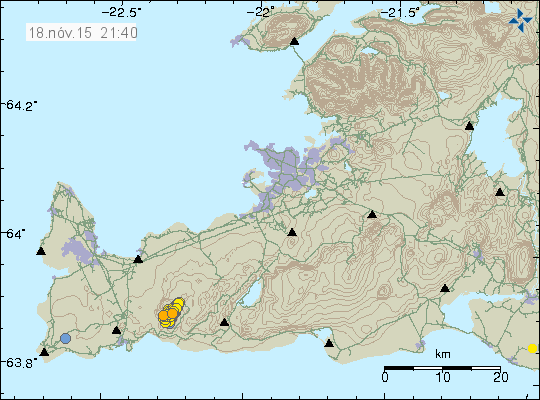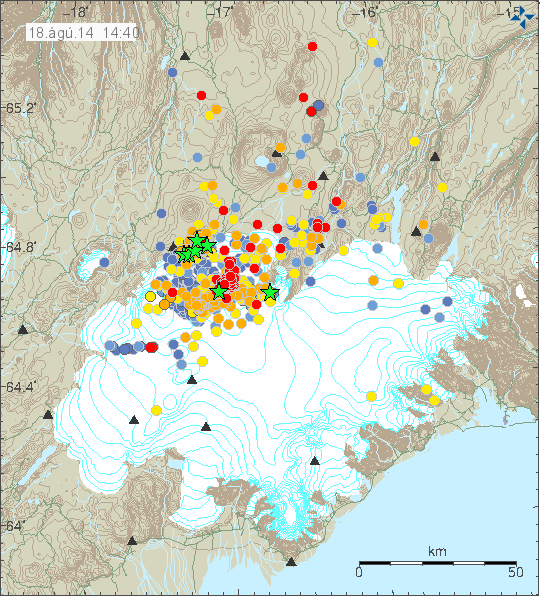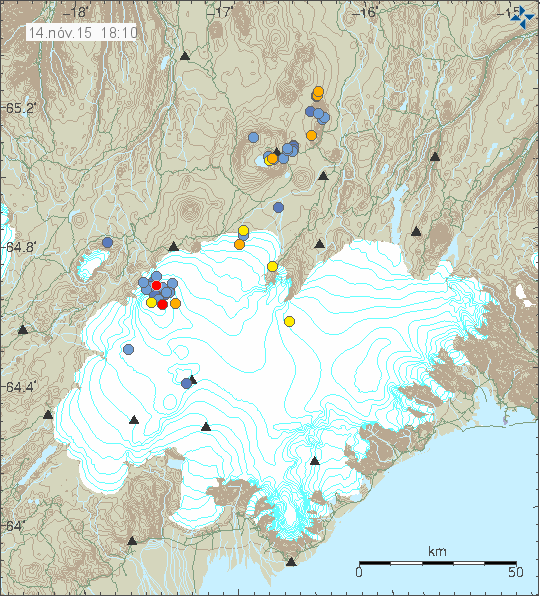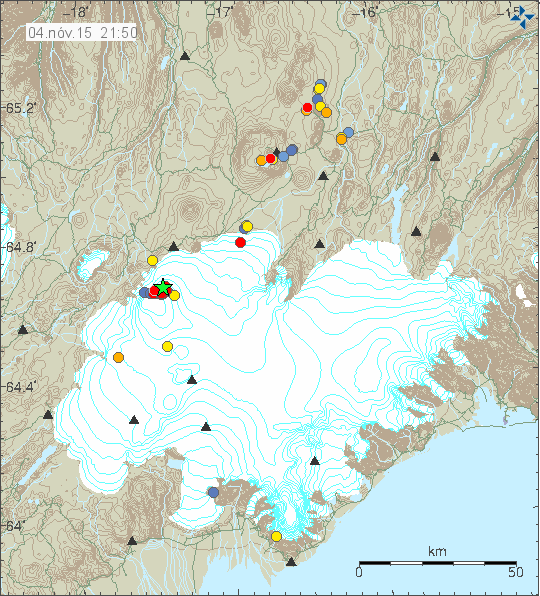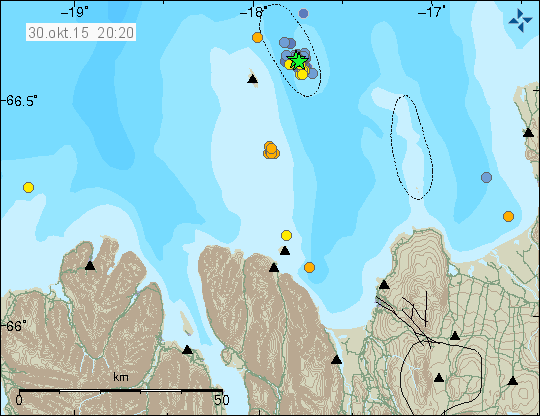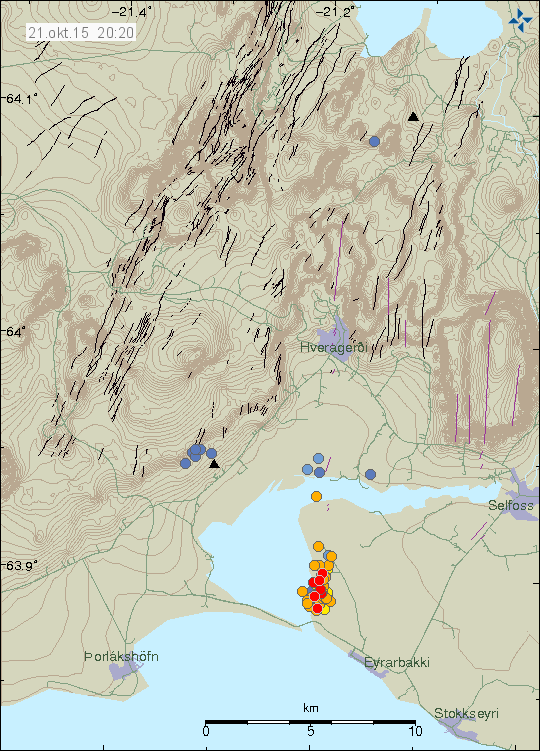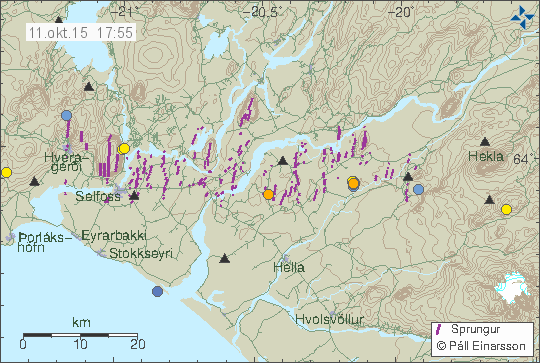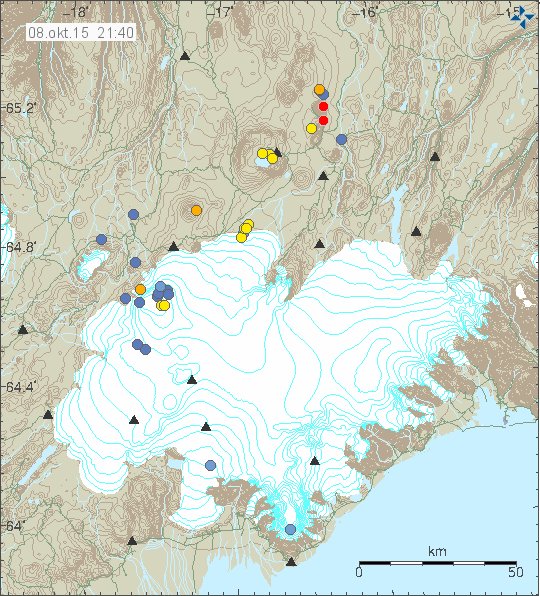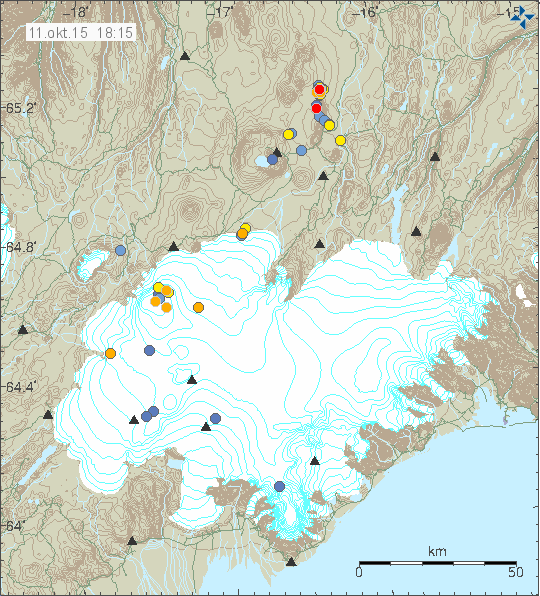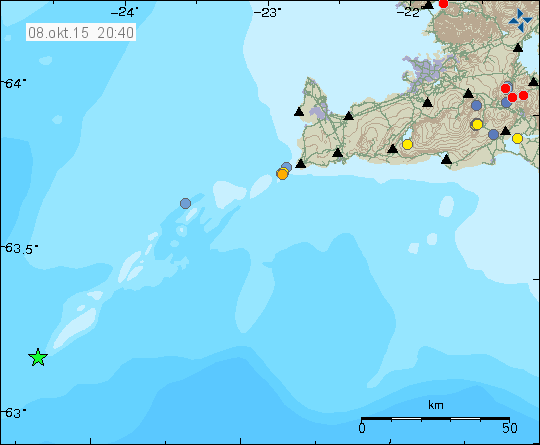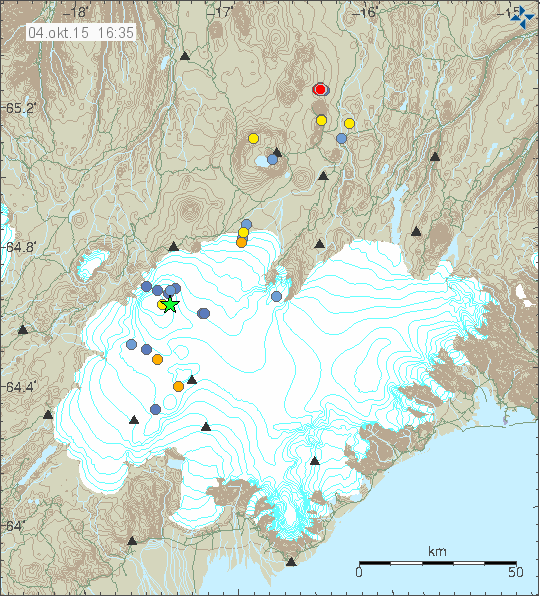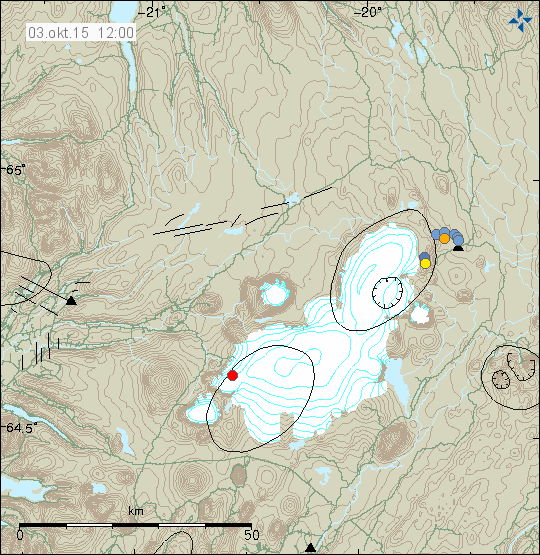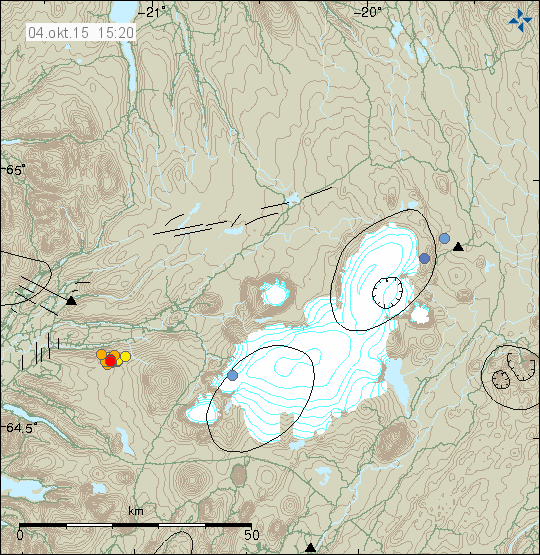Iceland Met Office confirmed today that inflation has started in Bárðarbunga volcano. According to images released by Iceland Met Office this inflation is not huge at the moment, that might change without warning if magma starts flowing into Bárðarbunga volcano magma chamber at faster rate then it currently is doing.
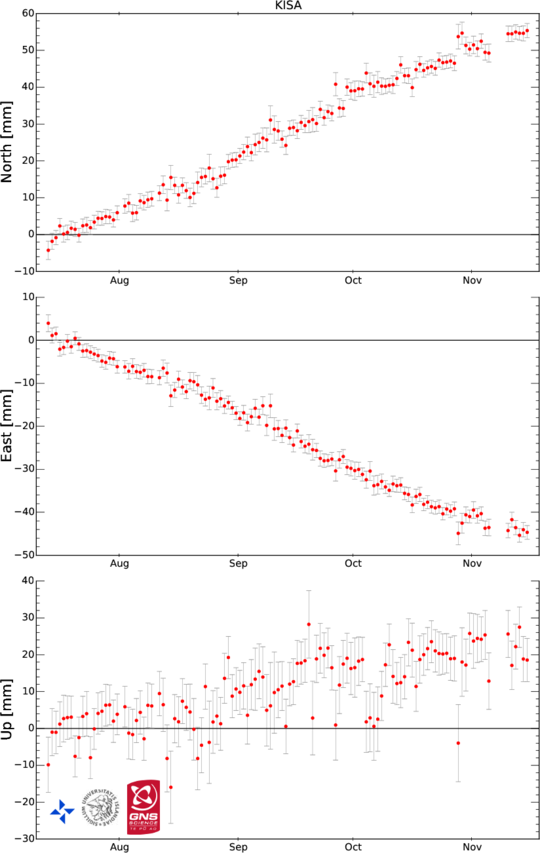
Inflation as recorded by Iceland Met Office. This recording has been corrected for normal tectonic drift, glacier movements and dyke intrusion from Holuhraun eruption. Copyright of this image belongs to Iceland Met Office.
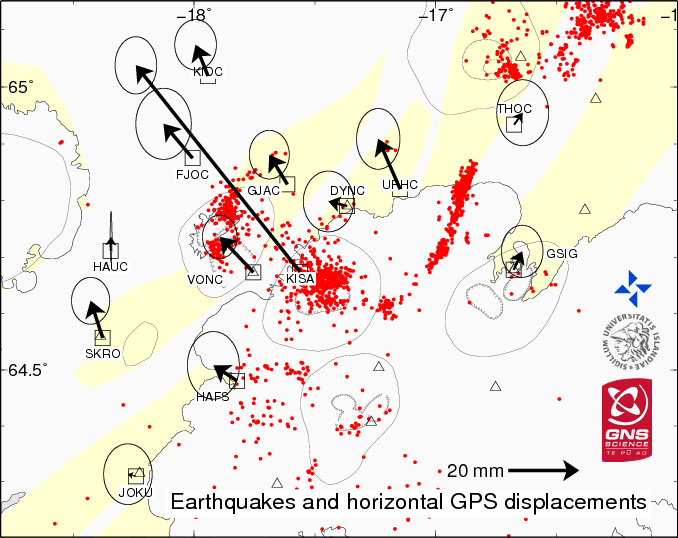
The inflation as it appears on GPS station on Bárðarbunga volcano. It has been corrected in the same was image above. Arrow show much the inflation is on each GPS station and the direction it is moving. Copyright of this image belongs to Iceland Met Office.
The problem here is that Bárðarbunga volcano continues to settle into new form after the eruption in Holuhraun, since there was a quiet magma chamber collapse during that eruption. The question remains how much strain the caldera can now take after the collapse and other unknown factor is that it is not known how much magma is needed before an new eruption can start or how long time this process takes. For the moment the only thing that can be done is to continue monitor what is going on in Bárðarbunga volcano.

